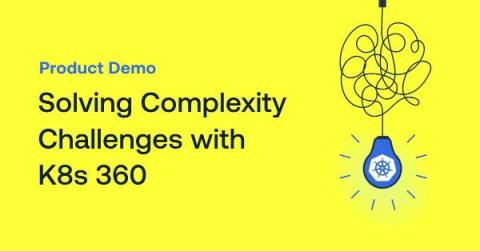Operations | Monitoring | ITSM | DevOps | Cloud
Latest News
Key Value Parser Delivers Useful Information Fast
Elastic Observability monitors metrics for Google Cloud in just minutes
Developers and SREs choose to host their applications on Google Cloud Platform (GCP) for its reliability, speed, and ease of use. On Google Cloud, development teams are finding additional value in migrating to Kubernetes on GKE, leveraging the latest serverless options like Cloud Run, and improving traditional, tiered applications with managed services. Elastic Observability offers 16 out-of-the-box integrations for Google Cloud services with more on the way.
Solving Complexity Challenges with Kubernetes 360
Here at Logz.io, we realize Kubernetes is the most common infrastructure component that organizations are running on to keep their applications going. In return, we’ve made a big investment to support Kubernetes properly and give customers the tools they need to investigate and troubleshoot any issues that arise.
Optimizing VPC Flow Logs - Part 1
How SpyCloud Architected Its Cribl Stream Deployment
In this livestream, I talked to Ryan Saunders – Manager of Security Operations at SpyCloud, about how he used the Cribl Reference Architecture to build a scalable deployment. He explained how this approach enabled SpyCloud to grow alongside its evolving needs without requiring significant rework. The reference architecture also facilitated a repeatable data-onboarding process, reducing administrative time and allowing the team to focus on critical security and data analysis tasks.
Splunk Edge Hub: Physical Data, Sensing and Monitoring on the Edge
C-suite insights on the transformative power of generative AI
Generative AI is revolutionizing the way businesses operate, from improving operational resilience to mitigating security risks and enhancing customer experiences. In a recent roundup of c-suite insights from three IT leaders — Matt Minetola, CIO, Mandy Andress, CISO, and Rick Laner, chief customer officer — we gain a comprehensive understanding of how generative AI is being used to improve business outcomes across organizations.
SIEM Implementation Guide: A How-To Guide
In an era where cybersecurity threats are not just frequent but increasingly sophisticated (and becoming more costly), the need for robust defense mechanisms has never been more critical. Security Information and Event Management (SIEM) emerges as a cornerstone in this complex data environment. It’s not just another tool in your cybersecurity toolkit; it’s a solution designed to elevate your organization’s security posture.
The Leading Jaeger Dashboard Examples
Unlocking the full potential of observability and tracing in modern software ecosystems has become imperative for businesses striving to deliver improved reliability and user experience. In this comprehensive roundup, we will dive into the world of Jaeger-incorporated observability and tracing dashboards, offering a curated selection of the best use cases that empower DevOps teams, engineers, and developers to gain unparalleled insights into the inner workings of their applications.










